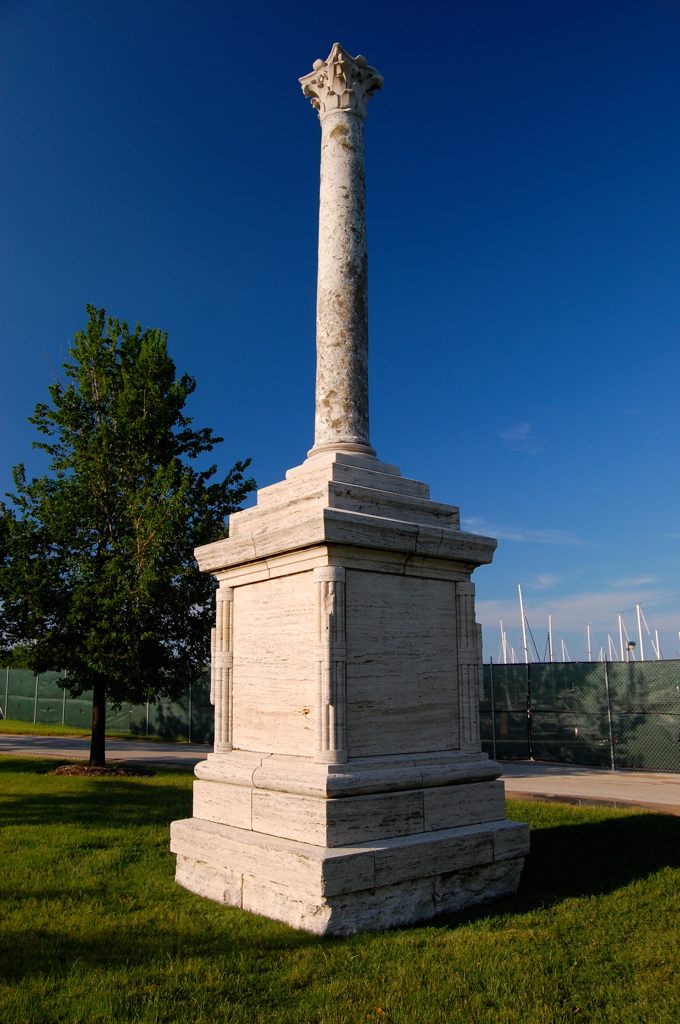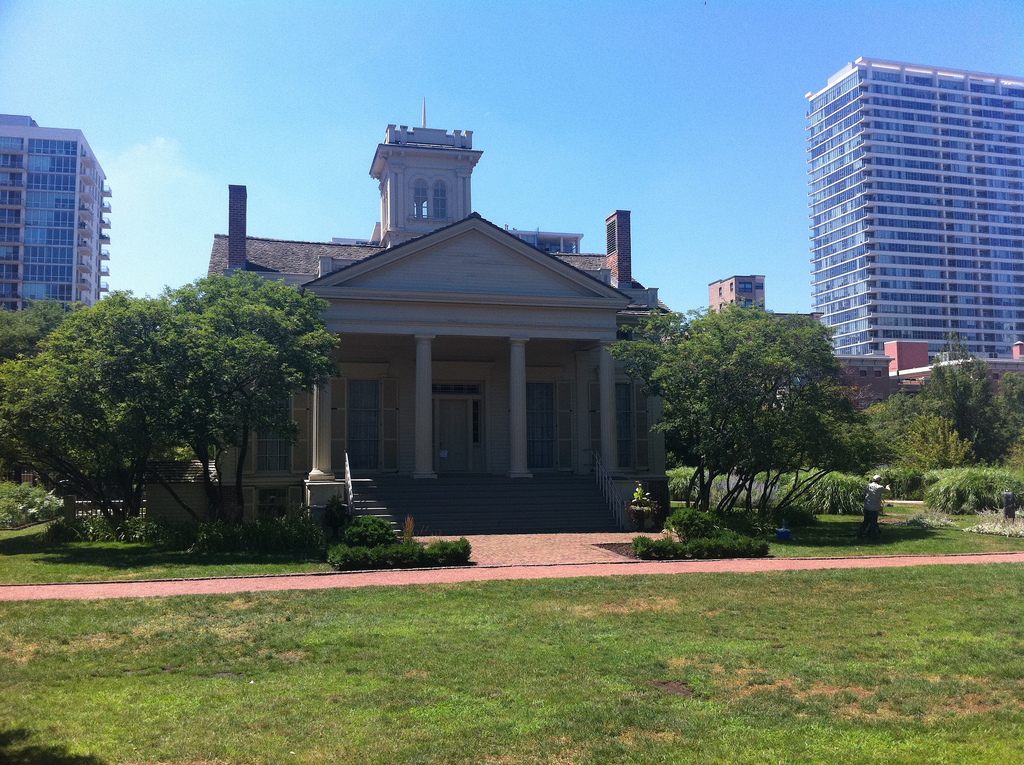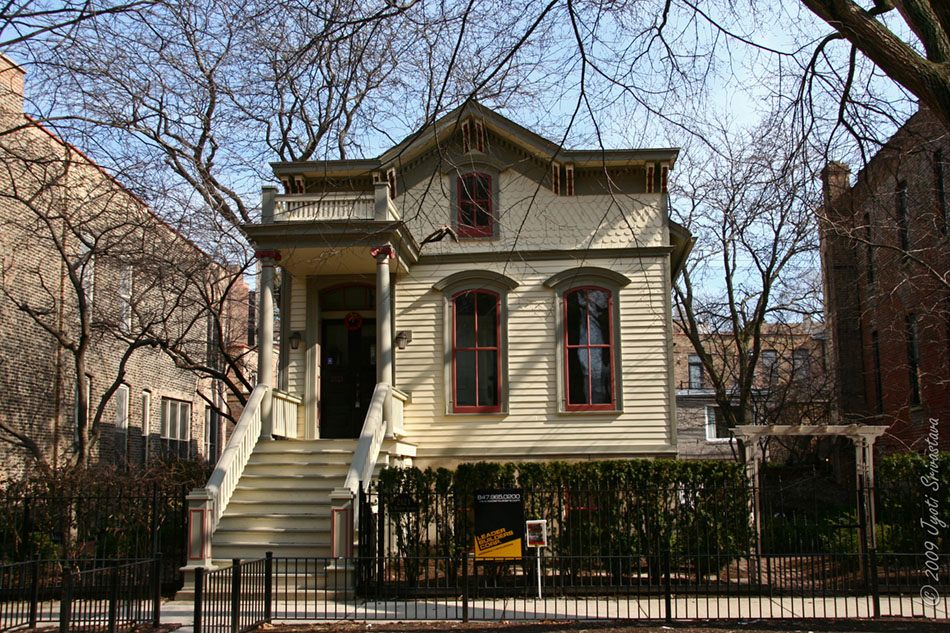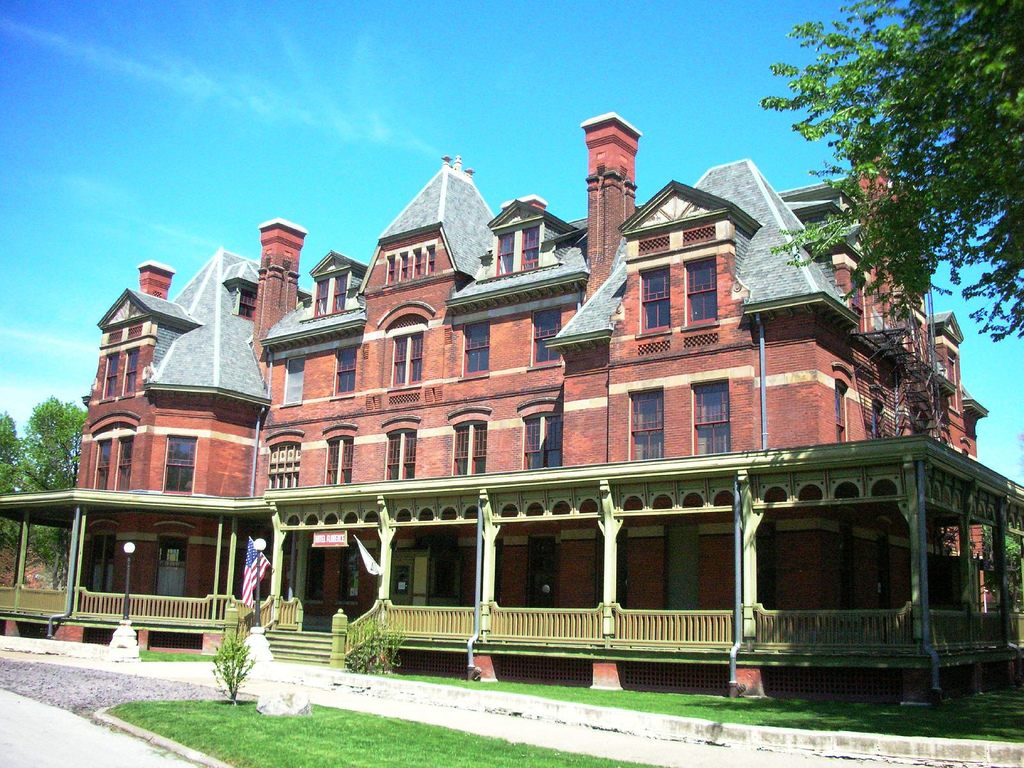The Most Accessible Relics of Chicago
Illinois Week on Atlas Obscura was created in partnership with Enjoy Illinois as part of the launch of the new Illinois Obscura Society. Sign up to find out more about the back room tours, unusual adventures, and incredible parties that Atlas Obscura will be putting on in Chicago and greater Illinois.
 Bas relief from Chicago Stadium at St. Ignatius College Prep (Photo by Jyoti Srivastava, Used with Permission)
Bas relief from Chicago Stadium at St. Ignatius College Prep (Photo by Jyoti Srivastava, Used with Permission)
Chicago isn’t just a city. It’s a collection of neighborhoods built and defined by ethnic groups and cultures from across the world. Nowadays a lot of those old neighborhoods look much different than they did over 100 years ago but bits and pieces of these places still echo the history of the people, places, and events that helped to shape the way the city lives today. With a little determination and exploration you can visit some truly hidden relics that most Chicagoans don’t even know exist.
Architectural Remnants at St. Ignatius College Prep
1076 W. Roosevelt Rd


Architectural Remnants at St. Ignatius College Prep (Photo by Photo by Jyoti Srivastava, Used with Permission)
Originally built in 1870, St. Ignatius College Prep is one of Chicago’s oldest and most prestigious high schools. But the historic academic building isn’t the delight here. In the early 1990s, school president Father Donald Rowe began collecting pieces of classic Chicago architecture destined for demolition, figuring these artifacts would complement the school nicely.
Over the course of two and a half decades the school has acquired gorgeous remnants from places like the Chicago Stock Exchange (built 1893), Chicago Stadium (built 1930), Corn Exchange Building, The Ogden Avenue Viaduct (built 1932) and the Record-Herald Building, among others.

Flowerpot from Chicago Stock Exchange Building, now at St. Ignatius (Photo by Jyoti Srivastava, Used with Permission)
Balbo Monument
Located on the Lake Front Trail, just east of Solider Field and between Waldron Drive and McFetridge Drive

Balbo Monument (Photo by Eric Allix Rogers on Flickr)
The Balbo Monument is the oldest, publicly accessible structure in Chicago, and perhaps the only one donated to the city by one of America’s greatest enemies. Originally built around 117 BCE, it was donated to Chicago in 1933 by Benito Mussolini to commemorate the transatlantic flight of Italo Balbo and the Italian Pavilion at the Century of Progress World’s Fair.
The monument bears the following description:
“This column, twenty centuries old, was erected on the beach of Ostia, the port of Imperial Rome, to watch over the fortunes and victories of the Roman triremes. Fascist Italy, with the sponsorship of Benito Mussolini, presents to Chicago a symbol and memorial in honor of the Atlantic Squadron led by Balbo, which with Roman daring, flew across the ocean in the 11th year of the Fascist era.”
Oak Woods Cemetery
1035 E. 67th Street

The Oak Woods monument to the Camp Douglas dead (Photo by seanbirm on Flickr)
Oak Woods is the final home of Olympian Jesse Owens, five Chicago Mayors, and legendary baseball player Cap Anson. It is also the site of what may be the largest mass grave in the Western Hemisphere.
During the Civil War, Camp Douglas opened as one of the largest Confederate POW camps in the Union. Located in what is today Chicago’s Bronzeville neighborhood, Camp Douglas was notoriously horrible, resulting in the deaths of thousands of Confederate troops. The soldiers were temporarily buried at Camp Douglas but it was decided that they would need to be moved. So off to Oak Woods they went, interned as the first burials in the new cemetery.
A monument at Oak Woods claims that 6,000 soldiers are buried there, and has the names of more than 4,000 men engraved into it.
Henry B. Clarke House
1827 S. Indiana Ave

The Clarke House (Photo by John Tolva on Flickr)
Built in 1836, the Clark House is the oldest house standing in Chicago today. The house, which was moved to its current site in the 1970s, serves as a museum where visitors can get a taste of what life was like for Chicago’s earliest settlers.
Bellinger Cottage
2121 North Hudson
 The Bellinger Cottage (Photo by Jyoti Srivastava, Used with Permission)
The Bellinger Cottage (Photo by Jyoti Srivastava, Used with Permission)
Not many buildings survived the Chicago Fire of 1871. Actually, it’s believed that only about seven made it out intact. On the northern end of the Chicago Fire Zone –in present day Lincoln Park- one lone cottage stood on Hudson Avenue. It was owned by policeman Richard Bellinger and according to the Chicago Tribune the house was designed by William Boynton, the same architect who built the Chicago Water Tower (also a survivor of the Fire).
In 1988 the Tribune wrote that the house was saved from the fire by Bellinger, his brother-in-law and another cop who tore down the sidewalk and wooden fence around the cottage as to make a firebreak. They then soaked rugs and blankets in a nearby well and carried them to the shingle roof to protect it from the embers and ash falling from the sky.
Another interesting artifact from the fire is a large hunk of melted metal located in nearby Lincoln Park. To the unsuspecting eye it looks like a piece of garbage or even a large rock. It’s actually the remains of a hardware store that burned during the conflagration of 1871, and it weighs more than 24 tons.

This used to be a hardware store. (Photo by Jyoti Srivastava, Used with Permission)
Pullman District
East of Cottage Grove Ave from E 103rd St. to E 115th St.

The Florence Hotel in the Pullman District (Photo by Richie Diesterheft on Flickr)
The Pullman District is a remarkable example of a planned community–the first planned industrial town in the United States. George Pullman was a powerful industrialist and owner of the Pullman Palace Car Company, which built and assembled sleeping cars for trains. In the 1880s he built the town of Pullman to house his employees. The town, the site of the 1894 Pullman strike, was eventually annexed into the city of Chicago. Some points of interest within the Pullman District include the Hotel Florence (11111 S. Forrestville Ave) and the Greenstone United Methodist Church (11211 S. Saint Lawrence Ave). President Obama announced this month that he will designate the Pullman District as a National Monument.
Illinois Week on Atlas Obscura was created in partnership with Enjoy Illinois as part of the launch of the new Illinois Obscura Society. Sign up to find out more about the back room tours, unusual adventures, and incredible parties that Atlas Obscura will be putting on in Chicago and greater Illinois.








Follow us on Twitter to get the latest on the world's hidden wonders.
Like us on Facebook to get the latest on the world's hidden wonders.
Follow us on Twitter Like us on Facebook